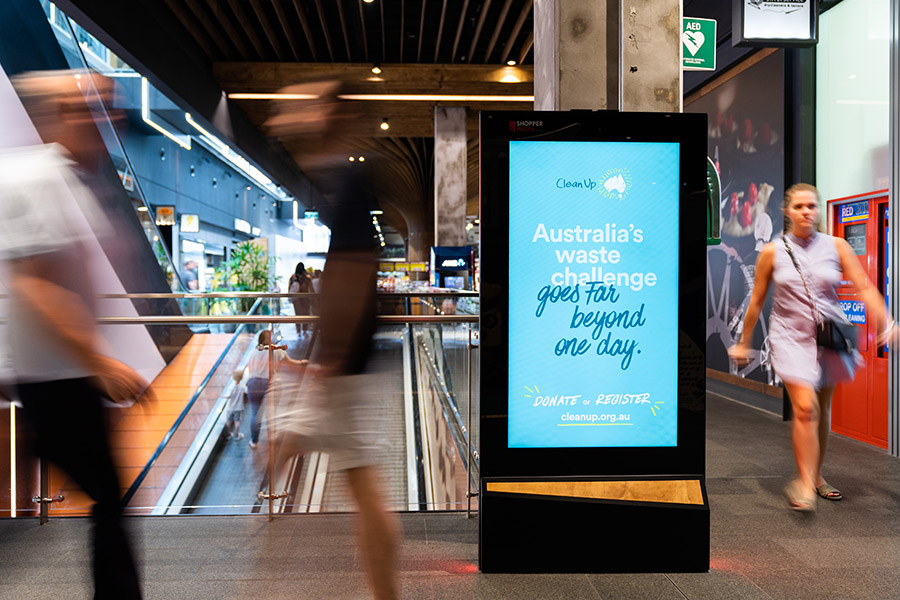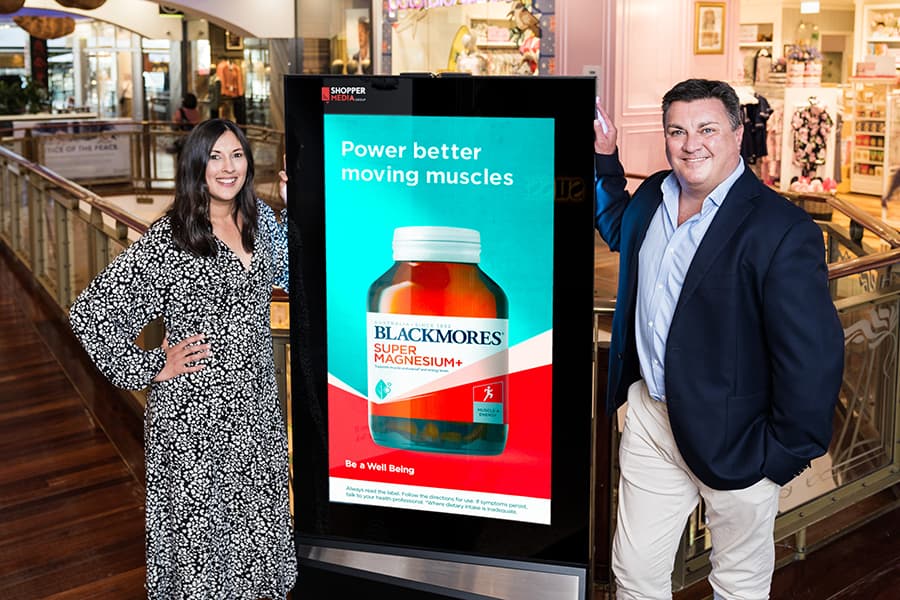A new Shopper Media study, conducted in partnership with Neuro-Insight, has taken a deep dive into the shopper’s subconscious to better understand the impact of advertising within shopping centres.
The study revealed that animated advertising in walk by retail environments best captures a shopper’s attention.
Emily Sak, Head of Data and Insights at Shopper Media, says, “Each day we are inundated with an average of 8,000 advertising messages, so brands need to ensure their communication is distinctive and memorable.”
“The Shopper Media study was conducted to understand the power of animation in grabbing the attention of shoppers. The study looked into the impact of animation through the monitoring of brain responses, with a focus on long-term memory and eye tracking.”
Using Steady State Technology Cap & Eye Glasses, the study measured the shopping journeys of 134 respondents in relation to advertising panel placement, static versus animation, retail floor-mounted portrait panels, small-format roof-installed panels and shopping centre entrance signage. Data scientists analysed 36,000 points of brain activity per person, to analyse subconscious brain responses and eye movements in response to advertising.

According to Peter Pynta, CEO of Neuro-Insight, shopping centre environments offer a range of unique qualities, which the study’s diagnostics have identified and quantified. “Subconscious responses during a shopping journey provide strong drivers of behaviour. We know this through past research that links neuro responses to consumer behaviour,” explains Pynta.
“The research identified three key findings,” adds Sak. “Firstly, animation is 200% more effective than static advertising, as it demands shopper eyeballs, including fixation length and saccades (quick simultaneous eye movement), and drives brand engagement.
“Animation also triggers higher peaks of memory encoding more frequently than nonanimated sites, enabling brand information to be stored in our memory in busy retail environments. Animation is two-and-a-half times more likely to receive a return gaze, with 88% greater eye movement of shoppers. These figures prove that animated advertising is key for a successful campaign. This is amplified with the local nature and familiarity of shopping centres to jumpstart shopper’s engagement with brands.”
“The fact that memory encoding is two times stronger with animation (than non-animation) this is really very significant – given that it applies to any one moment of exposure,” adds Pynta. “This increased impact over a broader campaign with multiple exposures will have a cumulative effect that is quite powerful – it’s like earning more interest on your superannuation over your working life. It ends up making a tangible difference!”
“Secondly, shoppers are more attentive to walk-by advertising, with retail shopping sites receiving 147% greater eye movement than drive-by sites. Retail advertising formats are situated at eye-level, allowing shoppers to effortlessly view ads. Likewise, due to dwell time and the pace of a walk-by journey, shoppers experience longer fixations and return gazes, translating to higher viewability and attention in shopping centre environments. Further supporting Shopper Media’s positioning that essential retail locations are a fundamental channel for a brand’s advertisement campaign,” says Sak.
“Collectively, the findings support the idea that retail Digital OOH is more effective for both brand recall and detailed messaging retrieval,” adds Sak.
Shopper Media’s focus on the use of animation across its network of 100% digital Smartlite® panels, means it’s serving attention-grabbing brand messages to shoppers in more than 370 local shopping centres Australia-wide.





















